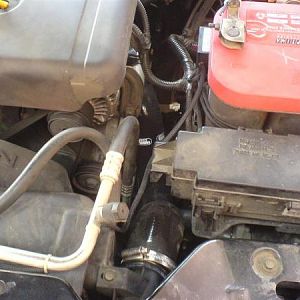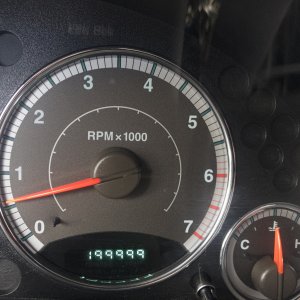PapaSmurf
New Member
(Reposting this in the KJ forum - inadvertently posted in KK originally)
Bought my KJ used 2 weeks ago. Within hours of the purchase got a CEL. Checked the codes a couple of days later and had both downstream O2 sensors showing high voltage (low? can't remember).
About a week later purchased a scanner and cleared the codes. Drove about 10 minutes and CEL back on - same issues.
Check the codes this evening and now have four codes P0138, P0139, P0158, and P0159. From what I am reading both downstream sensors are showing "high voltage" as well as "slow response."
I have searched here and overall and get the concept that this may be more than just the O2 sensor. Just not really sure how to go about doing a good diagnosis. My thoughts are to simply replace the sensor and see what happens (I have over 106+ miles on it and it may very likely be time for them to be replaced - don't know the maint history of the vehicle). But at the same time I hate to simply waste the $$ on a new part if that isn't the problem.
Saw a video where someone was checking a Nissan and did an voltage check on the harness. What voltages should I expect to see in the wiring?
Any help will be appreciated. I'm not a mechanic but have a generalized understanding of doing basic stuff.
Bought my KJ used 2 weeks ago. Within hours of the purchase got a CEL. Checked the codes a couple of days later and had both downstream O2 sensors showing high voltage (low? can't remember).
About a week later purchased a scanner and cleared the codes. Drove about 10 minutes and CEL back on - same issues.
Check the codes this evening and now have four codes P0138, P0139, P0158, and P0159. From what I am reading both downstream sensors are showing "high voltage" as well as "slow response."
I have searched here and overall and get the concept that this may be more than just the O2 sensor. Just not really sure how to go about doing a good diagnosis. My thoughts are to simply replace the sensor and see what happens (I have over 106+ miles on it and it may very likely be time for them to be replaced - don't know the maint history of the vehicle). But at the same time I hate to simply waste the $$ on a new part if that isn't the problem.
Saw a video where someone was checking a Nissan and did an voltage check on the harness. What voltages should I expect to see in the wiring?
Any help will be appreciated. I'm not a mechanic but have a generalized understanding of doing basic stuff.










